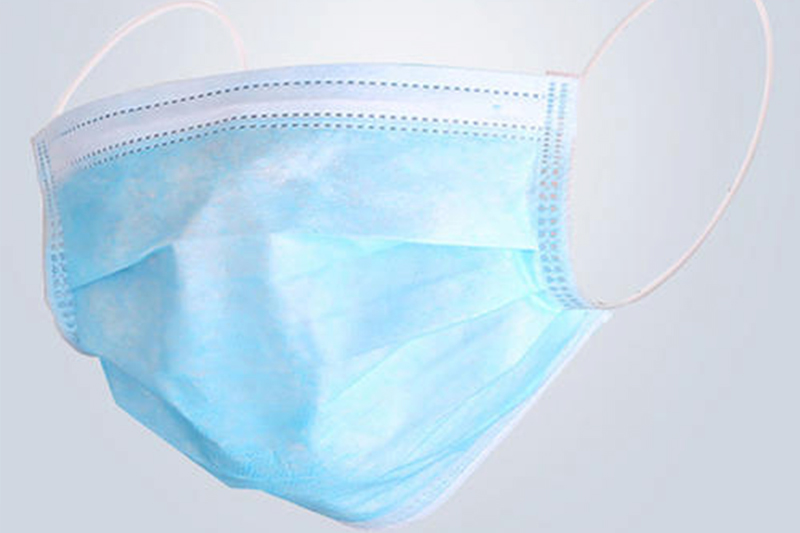Meltblown nonwoven fabric is a nonwoven fabric manufact […]
Meltblown nonwoven fabric is a nonwoven fabric manufactured by the meltblown Meltblown process, and it is also a product manufactured directly using the melt spinning process. The production process of meltblown nonwoven fabrics is to use polymer chips with high melt index (referred to as MFI), which are extruded and heated and melted into a high-temperature melt with good fluidity. The high-temperature, high-speed hot air will The thin stream of melt sprayed from the wire plate is blown into very fine fibers, which are gathered into a fiber web on a receiving device (such as a web forming machine), and the waste heat of itself is used to bond each other into a production process.

The American Exxon company started the research of melt blown technology in the 1960s and obtained the technology patent first. This process is still the mainstream production process widely used in the meltblown nonwovens industry. It is characterized by the use of a single row of spinneret holes and hot air drafting, which is blown out at a certain angle from both sides of the spinneret.
Melt blown method is currently an important process for manufacturing fine filter materials and materials with high barrier properties. It is also a method of manufacturing nanomaterials and a technology that is still developing rapidly.
Because the molecular weight of the meltblown fiber is small, the crystallization is not sufficient, the orientation is not strong, and there are fewer force molecules, so the strength of the meltblown fiber is low. However, the meltblown fiber web is self-bonded into fabric by reliance on waste heat. The main reason for its low strength is the low strength of the bonding points between the fibers and easy separation, rather than the low fiber strength. Therefore, the breakage of the meltblown cloth is not the fiber breakage, but the breakage at the bonding point.
In order to overcome the low strength and non-wear characteristics of meltblown cloth, meltblown cloth is often combined with spunbonded cloth and needle punched cloth to make composite materials. To improve its comprehensive use effect. At present, the most commonly used are SM and SMS composite materials compounded with spunbond cloth, SMS+breathable membrane+S composite, etc.
So what are the applications of meltblown manufacturing?
Meltblown nonwovens are widely used in fields such as medical and health, automobile industry, filter materials, and environmental protection. Abroad, meltblown nonwoven fabrics are mainly used as two-step SMS materials and medical and health materials and coating materials. In addition, wiping and absorbing materials, filtering and barrier materials are also important uses for meltblown fabrics.
01. Medical protective equipment
Because the composite material of meltblown fabric and spunbonded non-woven fabric has high hydrostatic pressure resistance, good air permeability and filtering effect, especially the material composited with membrane, it has good barrier performance, and it has good barrier properties against non-oily particles. The filtration efficiency can reach more than 99%. For example, medical protective clothing made of composite materials with a quantitative specification of 60-100g/m2 can effectively block microorganisms, particles and fluids, and has a good protective effect against SARS viruses and HIV viruses (with a size of 90nm).
02. Materials for air filtration
The meltblown composite material treated by electrostatic electret, when used in air filtration, has low initial resistance, large dust holding capacity and high filtration efficiency [Under the state of 32L/min flow rate, the filtration efficiency of 0.3μm particle size can reach 99.9 %, resistance is only 117.7Pa (12mm water column)] and other characteristics, widely used in electronic manufacturing, food, beverages, chemicals, airports, hotels and other places of air purification treatment.
03. Materials for liquid filtration
Melt-blown non-woven fabric can also be used as a liquid filter material, which can filter particles with a particle size of 0.22-10μm. Such as bacteria, blood and macromolecular substances. PP meltblown non-woven fabric with hydrophilic properties can be used to make cell phone battery separators.
04. Thermal insulation materials
Meltblown nonwovens have the characteristics of large specific surface area, small voids (pore size ≤20μm), and high porosity (≥75%). Since the thermal conductivity of air is much smaller than that of ordinary fibers, the air in the pores of the melt-blown non-woven fabric makes the thermal conductivity smaller, and the heat loss conducted through the fiber material of the melt-blown non-woven fabric is very small, and countless super The static air layer on the surface of the fine fiber prevents the heat exchange due to the flow of air, so that it has a good heat insulation and warmth preservation effect.
Polypropylene (PP) fiber has the smallest thermal conductivity among existing fiber materials. The specially treated meltblown thermal insulation flake made of PP fiber has a thermal performance 1.5 times that of down and 15 times that of ordinary thermal cotton.
05. Oil-absorbing material
PP fiber has good hydrophobicity and lipophilicity, low density (0.91g/cm3), low water absorption (0.01%), and moisture regain of 0.05%. It has stable chemical properties such as insoluble in oil and acid and alkali resistance. It is very Excellent oil-absorbing material. The oil absorption of the meltblown nonwoven fabric produced from PP raw materials is 15-17 times its own weight, and the water absorption is 0.07-1 times its own weight. It has the characteristics of fast oil absorption, long-term floating on the water surface after oil absorption, and reusability.
06. Wipe materials
Meltblown cloth is also an excellent wiping material, which can be used for cleaning and wiping precision instruments and equipment, and can also be used as a wipe cloth for household life. In order to prevent the fiber from falling off during use and affect the use, low temperature hot rolling process is often used to increase the surface strength of the melt blown cloth.